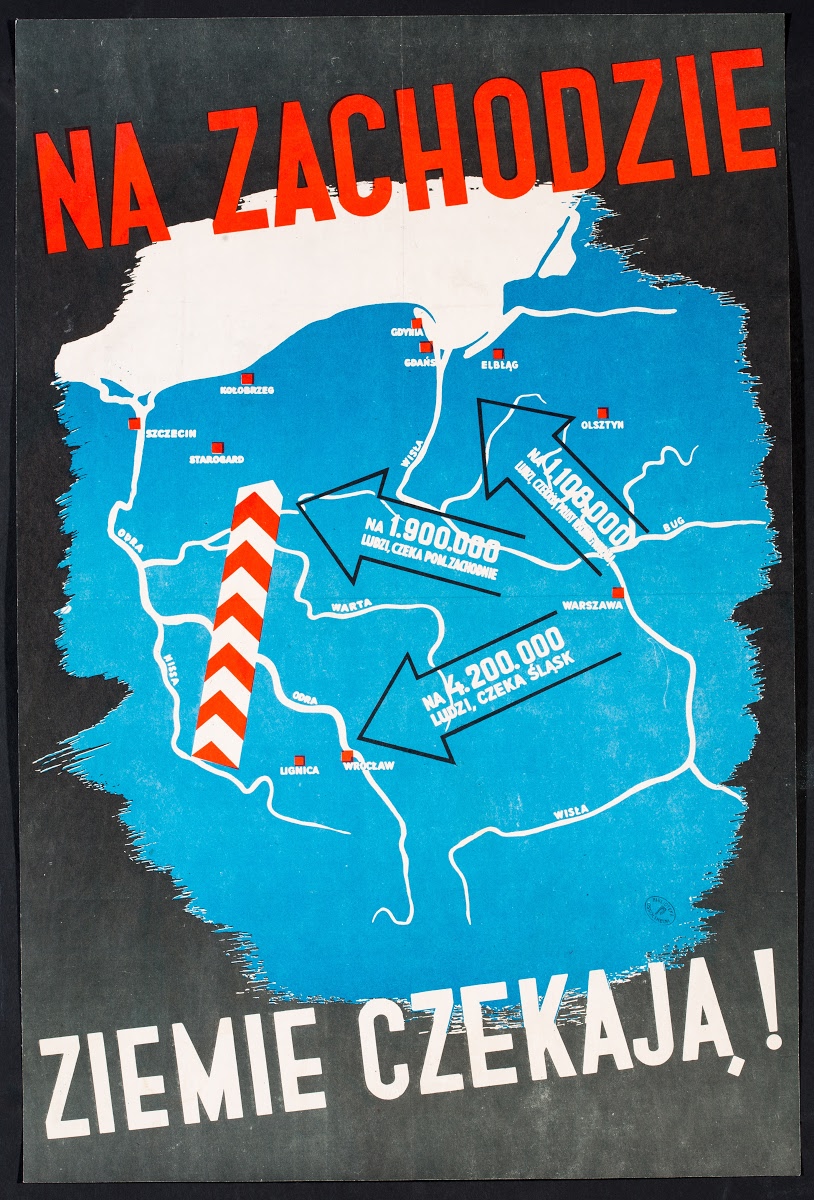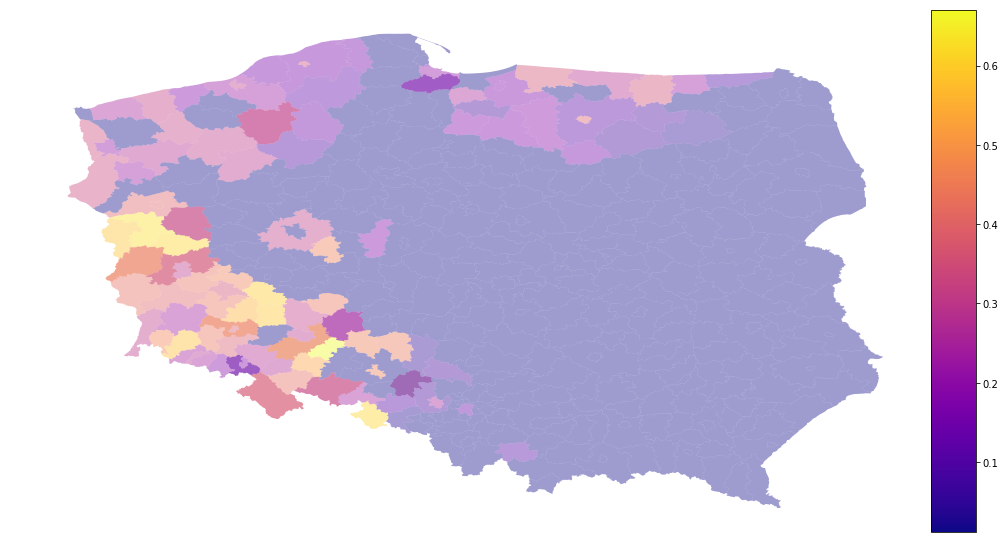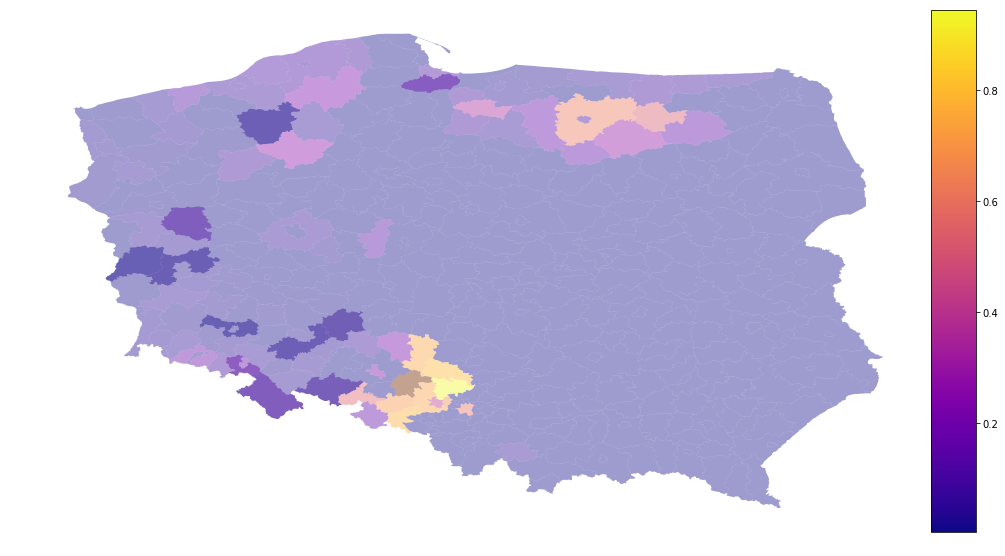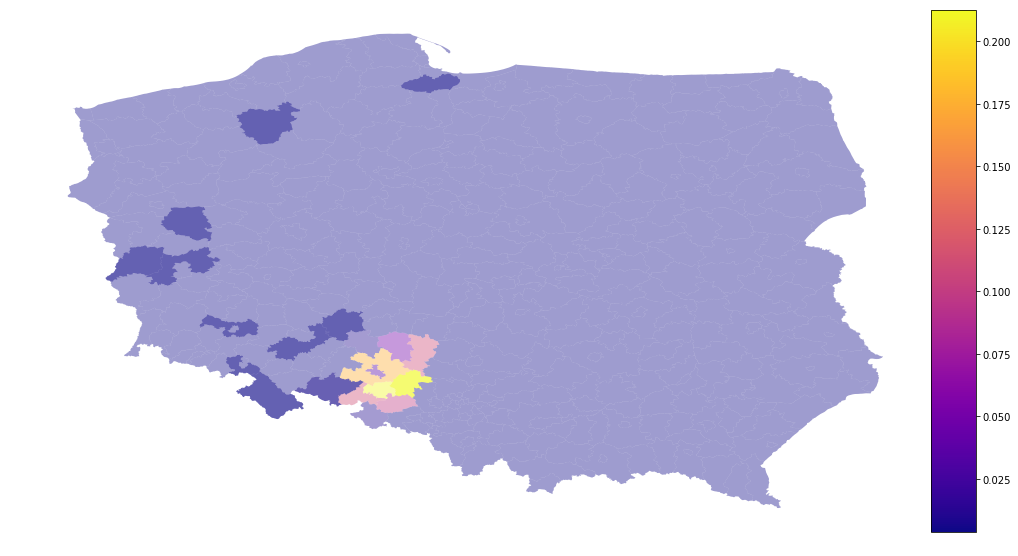In a recent post, I introduced “Ziemie Odzyskane” and shared some ideas why these territories still matter in contemporary Poland. In this post, I’ll discuss the different kinds of people who migrated to these new Polish territories after WWII.
An Age of Expulsion
Background
Today countries in Eastern Europe are some of the most homogenous in Europe. In Poland, Ukraine, Russia and the Balkan states after the 1990’s, a mostly homogenous ethnic group largely dominates each country. With few exceptions, government leaders in each country in recent years adopted more nationalistic and anti-immigrant political stances.
However, this ethnic homogeneity is a modern feature of Eastern European society. In historical Poland, Ukraine, Belorussia as well as the Balkan and Baltic states, ethnic heterogeneity was the norm. Poles, Ukrainians, Jews, Lithuanians, Russians, Germans and numerous other ethnic groups lived side by side (though not always in peace). Borders were once loosely defined and only the political elite cared about grandiose ideas like nationalism. The average person had a strong sense of regional identity, and little to no grasp of national identity.
The events following WWII were a turning point. The chaos and uncertainty of WWII provided the ideal circumstances for those who sought to create a nationalist identity by paving over cultural diversity. A key tool to achieve this end was the removal of other ethnic groups, and once foreign powers established post-war borders the region witnessed an outburst of expulsion on a scale never before (and as of yet, never after) seen in Europe.
The Homogenization of Eastern Europe
Virtually all central and eastern European countries that experienced the turmoil of WWII firsthand also engaged in large voluntary and involuntary population exchanges after the war ended. The Soviets, no strangers to mass displacement, deported about 180K people suspected of having connections with Ukrainian nationalist movements from prewar southeast Poland by 1948. 200K ‘Kulaks’ and other ‘nationalists’ were deported from the Baltic states between 1945 and 1949. Soviets also expelled Poles from the new Soviet republics so that only 2 of 4 million Poles remained in prewar eastern Poland by 1944.
In this same region, since 1943 the Ukrainian Insurgent Army pursued a policy of violent expulsion and mass murder of ethnic Poles. Though it was difficult to sift Poles from Ukrainians in a region that was mostly bilingual and had little nationalistic identity, Soviet Ukrainian leaders took advantage of Nazi documents for which locals were forced to pick a nationality for identification. They then “evacuated” Poles based on these identifications. From 1944 to 1947, 780K Poles were deported from Ukraine, 274K from Belorussia and 197K from Lithuania. These populations were also composed of a significant number of Polish Jews. In total, it is estimated that 1.8M individuals were uprooted from Soviet territories between 1943-1948. Most ended up in the new Recovered Territories.
Polish communists also seized on this population exchange as an opportunity to achieve the ideal nationalist, homogenous state. In 1946, Polish authorities carried out Operation Rzeszów. Its goal was to expel hundreds of ethnic Ukrainians from their postwar southeast borders. Just like the Ukrainians on the opposite side of the border, Poles carried out ethnic and cultural cleansing measures such as dismantling Ukrainian language schools and cultural institutes as well as Orthodox churches. Between 1943 and 1946, 483K Ukrainians were expelled. In 1947, the Polish army carried out another Ukrainian expulsion in Akcja Wisła. Another 140K people were displaced in total.
Germans were also targeted for expulsion. By some estimates, 3 million Germans were expelled from the new western Polish territories. Significant populations of ethnic Germans were expelled throughout the new Soviet states, as well as from Yugoslavia, Hungary, Romania and the new Soviet republics.
This only scratches the surface concerning the amount of people involved in expulsions throughout the region. Other ethnic populations were also displaced, deported or forcibly expelled from their homes. If there was ever a single point in time that signaled the rise of nationalism and ethnic homogeneity that would define what Eastern Europe would become today, this is it. These expulsions are the catalysts of the homogenization of Europe.
The Peoples of the Recovered Territories
Once Poland’s borders shifted westward and the ethnic German population was largely expelled, a new mixture of populations took up residence in the Recovered Territories. The three most numerous groups that built new postwar lives in the region were Poles from central Poland, Poles (including Polish Jews) repatriated from pre-war Polish territory, and the “autochton” population — a group supposedly of Polish ethnicity that lived in the Recovered Territories before the new borders were established.
Each of these groups had different reasons for being in these new territories, often were in conflict with one other, and were the targets of a top-down, aggressive Polonization campaign. Below I will discuss each group separately, and drawn on data collected from a 1950 census on the origin of those in the Recovered Territories. Below is a map that summarizes all of the different groups and their origin in the Recovered Territories. In total, as about 7.5M Germans abandoned Poland’s new territories between 1944 and 1949 (be it through wartime flight or expulsion), between 1945 and 1949 4M Poles migrated to take their place. Among them were 2.5 resettlers, 1.3M repatriates and 200K Polish emigres from other countries.
Recovered Territories by Territorial Origin 
“Resettlers” from Central Poland
Generally, settlers from Central Poland moved to the territories that were closest to the region where they lived during the war. “Resettlers” (przesiedleńcy in Polish) is an appropriate term for those who moved to these territories, since in many cases these people made the conscious decision to start a new life in the Recovered Territories. While many of these families’ homes were destroyed during the war and moved to these territories out of desperation, many also migrated with the expectation that doing so would increase their material prospects. In fact, as evidenced by the poster below, there was a campaign in central Poland to encourage people to populate these territories by promising them a better future.
“The Recovered Territories—the future of Poland. Won and maintained by the democratic bloc.” 
As the map above indicates, the settlers from nearby central territories were well-distributed throughout these new territories. Since many of these families migrated in order to improve their material wealth, they were often disappointed by housing shortages and overcrowding and the general disarray that characterized life in the new territories.
This disappointment manifested in a general stereotype about these “resettlers” from central Poland. They were considered opportunistic, arrogant and lazy. This developed into a generalization supported by local government leaders who contrasted the hardworking and diligent settlers “from behind the Bug” (from beyond the Bug river, i.e. the settlers from the Soviet republics) with the unprincipled settlers from central Poland.
These settlers often clashed with the other groups. They often disparaged the autochton population as “Germans” given that their dialect of Polish was heavily influenced by German and their Silesian traditions differed a great deal from central Polish culture. Resettlers also mockingly referred to the repatriated population of Poles as “Ukrainians” due to their foreign customs and dialectic Polish. However, though these repatriated Poles were often grouped together, there was a significant amount of cultural variation within this group.
Repatriates from the Soviet Republics
Those repatriated from the Soviet territories of present day Ukraine, Belarus, Lithuania and Russia had entirely different reasons for moving. Many of these families were forcibly removed from their homes, or had their homes completed destroyed during the war. A significant number witnessed horrific violence at the hands of the Ukrainian Insurgent Army and thus were desperate to start over new and rebuild their lives in peace.
“In the west lands await us!” 
However, repatriates from these territories originated from a wide swatch of former Polish territory, all with distinct regional cultures. This led the Chief Official from Jelenia Góra—a large town in the Recovered Territories—to say the repatriated population that settled in the town was “a mosaic of society deriving from different parts of Poland.” These Poles lived side by side with Ukrainians, Lemkos, Rusyns, Russians and Belorussians for hundreds of years and developed customs foreign to the standard “Polish” culture of central Poles. However, officials from the time note that there was also significant “regional antagonism” between these repatriate groups as well. The repatriate population moved throughout the new territories, but settled largely in the western most part closest to the new border with Germany:
Map of Population Density of those from ZSRR 
“Autochton” Populations
There were two major “autochton” populations in the new territories. There is a regional group called the Masurs in northern Poland in the Mazury region who have their own regional culture and language that was heavily influenced by German. However, by far the biggest autochton population is in Upper Silesia, which had a strong regional identity before 1945.
Map of Population Density of Autochton Population 
Under the Prussian empire, Upper Silesia was considered a frontier territory. Alongside Protestant ethnic Germans lived a distinct ethnic group that spoke a regional dialect close to Polish and was largely Roman Catholic. Historically, there was significant unrest in the region and a great deal of militant Polish nationalist activity. There were armed uprisings throughout the 1920’s as part of the plebiscite campaign in which the region tried to vote for greater regional autonomy.
When the borders changed in 1945, Silesians finally found themselves within Polish borders. From the outset, there was a verification process used to confirm whether or not someone amongst the autochton population was a true Pole. This process was unevenly applied across the new territories, and instead of “verifying” people as Poles it largely served as a way to screen out Germans who were willing to lose their home to avoid staying in Poland.
This verification process was more than just a way to separate Germans from Poles for the purposes of expulsion. It was also used as a tool by the Polish government to justify the westward shift of the new Polish borders. As the poster indicates, the government wanted to show that Poles had always lived in this region as a way to shore up Poland’s claim to the new territory.
“We were not here since yesterday. We once reached far to the West.” 
Ironically, despite centuries of Polish nationalist sympathy, as a result of these humiliating verification processes the distinct regional identity of this autochton population solidified. The relentless Polonization campaign intensified a new “swojacy” or “ślązacy” identity that was growing in the region, one that considered itself neither Polish nor German and which persists to today.
In fact, the Silesian language is still one of the most common languages other than Polish spoken in Poland today. Below is a table of the most common foreign languages spoken at home in Poland. It is the result of a 2002 survey. One can see that Silesian is the most common foreign language in the exact regions dominated by the autochton population in the map from 1950 above.
| Language Used at Home (by Województwo) | |||||||||||||
|---|---|---|---|---|---|---|---|---|---|---|---|---|---|
| 2002 Polish Census (Narodowy Spis Powszechny) | |||||||||||||
| wojewodztwo | total | niepolski | angielski | ukrainski | niemiecki | kaszubski | slaski | niepolski_perc | angielski_perc | ukrainski_perc | niemiecki_perc | kaszubski_perc | slaski_perc |
| Ogółem | 38230080 | 563499 | 89874 | 22698 | 204573 | 52665 | 56643 | 1.47% | 0.24% | 0.06% | 0.54% | 0.14% | 0.15% |
| Dolnośląskie | 2907212 | 29978 | 7268 | 1344 | 10932 | 2 | 22 | 1.03% | 0.25% | 0.05% | 0.38% | 0.00% | 0.00% |
| Kujawsko-pomorskie | 2069321 | 12857 | 3157 | 63 | 5456 | 22 | 0 | 0.62% | 0.15% | 0.00% | 0.26% | 0.00% | 0.00% |
| Lubelskie | 2199054 | 10947 | 3978 | 525 | 1567 | 3 | 0 | 0.50% | 0.18% | 0.02% | 0.07% | 0.00% | 0.00% |
| Lubuskie | 1008954 | 8950 | 1460 | 499 | 3663 | 0 | 2 | 0.89% | 0.14% | 0.05% | 0.36% | 0.00% | 0.00% |
| Łódzkie | 2612890 | 12301 | 3970 | 135 | 2358 | 1 | 7 | 0.47% | 0.15% | 0.01% | 0.09% | 0.00% | 0.00% |
| Małopolskie | 3232408 | 25919 | 11290 | 474 | 4028 | 4 | 4 | 0.80% | 0.35% | 0.01% | 0.12% | 0.00% | 0.00% |
| Mazowieckie | 5124018 | 40813 | 17898 | 730 | 5060 | 16 | 14 | 0.80% | 0.35% | 0.01% | 0.10% | 0.00% | 0.00% |
| Opolskie | 1065043 | 108431 | 1738 | 175 | 88804 | 1 | 16398 | 10.18% | 0.16% | 0.02% | 8.34% | 0.00% | 1.54% |
| Podkarpackie | 2103837 | 17647 | 7641 | 2757 | 1644 | 1 | 4 | 0.84% | 0.36% | 0.13% | 0.08% | 0.00% | 0.00% |
| Podlaskie | 1208606 | 56151 | 4958 | 1452 | 887 | 3 | 0 | 4.65% | 0.41% | 0.12% | 0.07% | 0.00% | 0.00% |
| Pomorskie | 2179900 | 76902 | 5758 | 2103 | 12185 | 52588 | 11 | 3.53% | 0.26% | 0.10% | 0.56% | 2.41% | 0.00% |
| Śląskie | 4742874 | 104102 | 7873 | 329 | 48241 | 7 | 40179 | 2.19% | 0.17% | 0.01% | 1.02% | 0.00% | 0.85% |
| Świętokrzyskie | 1297477 | 5509 | 2294 | 72 | 1023 | 0 | 0 | 0.42% | 0.18% | 0.01% | 0.08% | 0.00% | 0.00% |
| Warmińsko-mazurskie | 1428357 | 21335 | 2644 | 9356 | 6421 | 11 | 0 | 1.49% | 0.19% | 0.66% | 0.45% | 0.00% | 0.00% |
| Wielkopolskie | 3351915 | 15789 | 4537 | 201 | 6466 | 5 | 1 | 0.47% | 0.14% | 0.01% | 0.19% | 0.00% | 0.00% |
| Zachodnio-pomorskie | 1698214 | 15868 | 3410 | 2483 | 5838 | 1 | 1 | 0.93% | 0.20% | 0.15% | 0.34% | 0.00% | 0.00% |
| TABLE: TAB. 8. LUDNOŚĆ WEDŁUG JĘZYKA UŻYWANEGO W DOMU ORAZ WOJEWÓDZTW W 2002 ROKU | |||||||||||||
Verification and Re-Polonization
Re-Polonization and De-Germanization
In a 1946 referendum, residents in the new territories were asked if they approved of Poland’s new western borders. Though the authorities falsified the results, 63.4% from the rural part of Opole district answered “no” to this question. This region was dominated by ethnic Germans and autochton populations later verified as Poles. The result indicates just how alienated the autochton population felt after finally coming under Polish rule, and how aggressive the process of Polonization was in this area.
Since the government viewed the autochton population as instrumental in helping affirm Polish claims to the territory, the new communist government made it a priority to Polonize this population and strip away remnants of the German culture that permeated the region. Many of these families spoke both German and Polish, and their Polish was dialectical and infused with German words and grammar. Officials carried out Polish language and culture lessons to encourage this population to speak “proper” Polish and to ease their grip on their distinct culture.
Local governments prohibited the use of German language and eradicated German writing in public places. There was a particularly big row over the use of German written on tombstones. The autochton population were horrified that officials would advocate for the chiseling of German writing off of graves. Further, families were encouraged to change their names to Polish variants.
Solidifying Regional Identity
All of these initiatives amounted to an aggressive ethnic cleansing effort amongst the autochton population which largely backfired. Instead of encouraging autochtons to gradually integrate, these efforts alienated the local population and intensified regional identity. This continued to the point that local officials cited an almost complete “lack of coexistence” between new settlers and autochtons. The Regional Governor of Upper Silesia, Arkadiusz Bożek, said of the matter: “Germans must now be laughing at us because what they failed to accomplish in seven centuries…we will achieve in just seven years, the eradication of Polishness right down to the roots.”
Silesians weren’t the only autochton population that suffered under exhaustive Polonization. In the Mazury region, Mazurs spoke a regional Polish inflected by German. However, unlike the Silesians—who were deeply Roman Catholic—Mazurs were largely Protestant. In this area, the government and Polish Roman Catholic church underwent an intense effort of de-Protestantization which the government equated with De-Germanization. Protestant church property was eventually handed over to the Roman Catholic church and the Mazurs were encouraged to convert. However, as Stalinist policies began to grip the central Polish government, religiosity was discouraged and there arose new official efforts to de-Catholize the region.
It wasn’t until the 1980’s and the rise of Solidarity when the treatment of indigenous peoples came under the spotlight. These people were gradually afforded the right to set up “German minority” organizations. In 1991, Germany minority candidates gained 7 of 460 seats in the Sejm (Polish parliament) and 2 of 100 seats in the Senate.
Since the 1990’s, a new Silesian nationalist movement has flourished. The map below shows the polling results of the German Minority Party in the most recent Polish parliamentary elections. Comparing it with the above map of the autochton population, one can see that the polling results match up neatly with the concentration of verified autochton population in 1950. It is fascinating to consider that one of the reasons that Silesians still have such a strong identity today results from the alienation of aggressive Polish nationalist policies targeted at them in the immediate postwar years—despite being the ones who advocated for pro-Polish nationalist causes before the war.
Map of German Minority Party Polling in the 2019 Parliamentary Elections 
Conclusions
The peoples who migrated and took up residence in the Recovered Territories were a culturally and linguistically diverse group. Each group was the target of intense cultural and ethnic cleansing by a government who sought to institutionalize the process of making Poles “Polish”. This meant paving over cultural differences in favor of a homogenized Polish culture supported by the central government. Today, except for the autochton populations who were alienated by these processes and held onto their cultural differences, this culture diversity is mostly lost in the generations of Poles who grew up in these new territories. Many do not even know of the German culture that flourished in the same lands for centuries because the whitewashing of German culture in the area was so thorough.
On a personal note, my Babcia and Dziadek met in these territories. My Babcia’s family immigrated from central Poland after their family farm was completely destroyed during the war. My Dziadek’s family, on the other hand, were one of the verified autochton Poles in the area. My grandfather grew up speaking German and his family lived in Upper Silesia for generations. However, my grandfather’s family chose to integrate as well as they could and largely gave up any local customs they had. My grandfather lost the ability to speak German completely as he grew up, though he never changed his name from Adolf. It’s fascinating to see my grandparents as belonging to distinct groups of “Poles” who—though they did not share a similar culture—nonetheless shared a similar experience of rebuilding their lives in the Recovered Territories after the decimation of World War II.